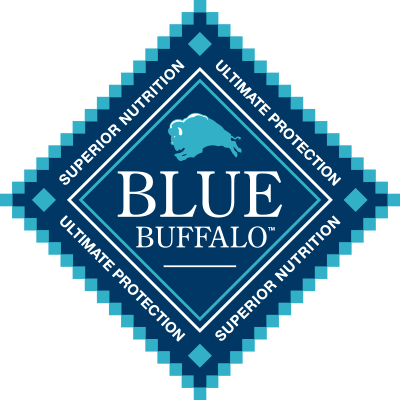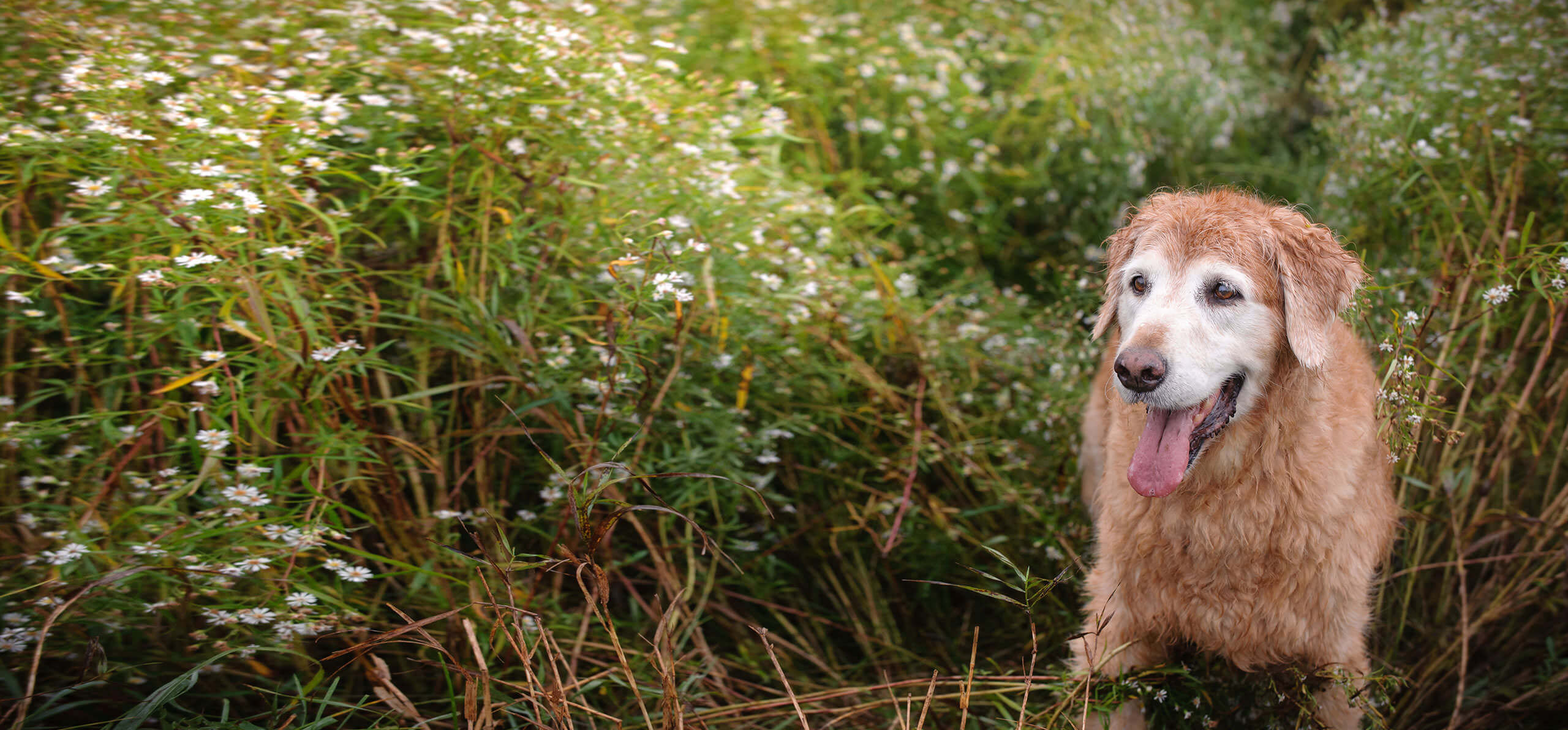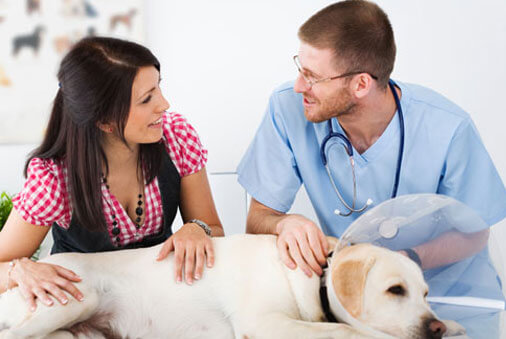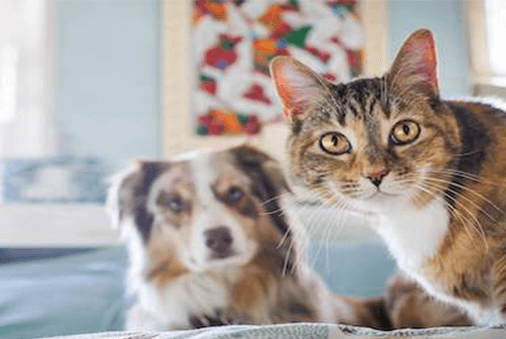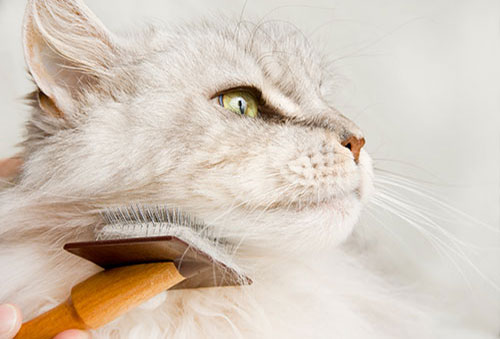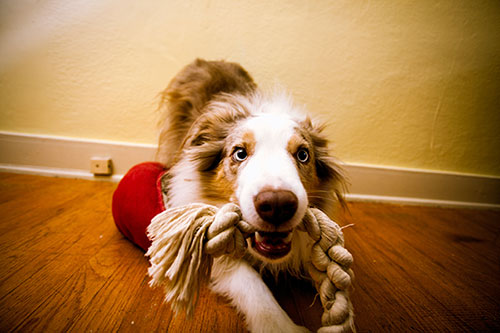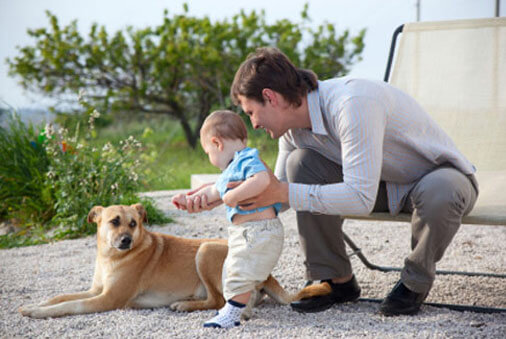Caring For Your Senior Dog: 7+ Years Old
Dogs are considered senior at different stages, depending upon their breed and size. If you have a giant breed dog (think Great Dane) they’re mature at five to six years old; smaller breeds, such as Chihuahuas, become seniors at 10 to 11 years old.
Feeding Mature Dogs
Many older dogs can’t maintain an optimal weight for their size and activity level. More energetic dogs may require more calories or better-tasting food to get them to eat; other older dogs may lead a more sedentary life and need to avoid weight gain.
Being underweight or overweight at any life stage isn’t ideal for your dog’s health. But, like humans, heavy and obese dogs are more vulnerable to diabetes, heart disease, and cancer.
Ask your veterinarian when you should switch your dog to a senior diet, and discuss any therapeutic formulas that may help control geriatric conditions common in aging dogs.
High-quality senior foods featuring real meat and other proteins can help your mature dog maintain strong muscles. Added antioxidants, omega-3 fatty acids, glucosamine, and chondroitin sulfate can help support their joints if they suffer from arthritis and hip dysplasia, which is prevalent in older dogs.
Signs Your Dog is Aging
Looking in the mirror, we may notice gray hairs and more wrinkles as we age. Luckily for dogs, they don’t check the mirror like we do.
And though they may feel older as they mature, they can’t really tell us. That’s why it’s important to watch your older dog more closely and make your veterinarian aware of any changes.
- Urinary issues: Urinary tract infections and kidney disease become more common in aging dogs. You may notice more accidents or strained urination due to incontinence; both can improve with medication once your veterinarian has weighed in. Also note any changes in your dog’s appetite and water consumption.
- Oral disease: Excessive bad breath, drooling, inflamed gums, and loose teeth may appear in older dogs, especially if they haven’t benefited from routine dental hygiene. See your veterinarian immediately to treat any oral problems and start brushing up on routine care.
- Deteriorating vision is normal in older dogs. It’s also common for aging dogs to have “cloudy eyes,” which doesn’t affect their sight like cataracts do. Be sure to check with your veterinarian to differentiate conditions and to rule out any other eye disorders and diseases. Your veterinarian can also show you how to help your dog adjust if their sight is becoming impaired.
- Coat and skin: Older dogs are prone to signs of allergies: dry skin, flakiness, hair loss, and itching.
- Older, large-breed dogs who are less active and lay down on hard surfaces often get calluses on their elbows. Encouraging them to use their comfy dog bed, or buying a new orthopedic one, can help calluses from becoming a painful nuisance.
- Paw problems: Senior dogs tend to have brittle nails so be careful clipping them. Also, your mature dog’s footpads can thicken over time. It’s wise to have more “pawdicures” done since older, less mobile dogs are less likely to wear their nails down from running around the house.
- Canine cancer: Cancer is the #1 disease-related cause of death for domestic pets. Older dogs are especially vulnerable because their immune systems weaken with age, leaving them unable to fight off diseases as easily as when they were younger.
Always let your veterinarian know if you find lumps or bumps on your dog, and if they grow larger or change in shape or firmness.
Signs and Symptoms of Cancer in Dogs
- Appetite and weight loss
- Slowly healing sores
- Bleeding from eyes, nose, or ears
- Excessive drooling, coughing, panting
- Extreme fatigue, lethargy
- Bowel changes, including blood and mucus in the stool
For more information on pet cancer and how you can help, check out the Pet Cancer Awareness website from Blue Buffalo™ and Petco®.
Tips For Giving Medication to Senior Dogs
Now that your dog is of a certain age, you may have to give them veterinarian-prescribed medications at home. Although dogs seem to wolf down anything, many are resistant when it comes to strange-looking and possibly funny-smelling pills, especially larger capsules.
Here are some tips and tricks for getting older dogs to “take their medicine:”
- Choose chewable, flavored medications whenever possible.
- Unless the medication says to avoid giving with food, mix your dog’s meds into their meal. Push the pill inside canned or soft food like peanut butter or a small chunk of cheese. Small cubes of cooked ground beef or chicken work well, too.
- Give your dog unmedicated food and treats first before introducing food containing the pill, followed immediately by a normal treat so they don’t taste or sense the medicated treat.
- You can fool your dog the same way if they like to catch their treats — toss them the medicated food before they even realize it’s different.
- If you can’t trick your wise canine into taking their meds, you may have to open their lower jaw with one hand, while holding their upper jaw with your other hand and lifting their head toward the ceiling.
Once their mouth is open, insert the pill to the side of your dog’s tongue as far back as you can, then quickly remove your hand as you close their jaw. Keep their nose pointed up at the ceiling as you hold their jaws closed and gently stroke their throat downward to help them swallow. Once you know they swallowed, reward them with a favorite treat.
Behavior Changes in Senior Dogs
We all know the curmudgeon stereotype for old humans, but dogs can get cranky as they age, too. If your once playful, happy-go-lucky canine is now ill-tempered and standoffish, it could be a symptom of dementia.
If your dog seems confused, disorientated, irritable, paces uncharacteristically, and has other personality changes, have your veterinarian rule out Canine Cognitive Dysfunction (CCD).
It’s common for dogs 10 years and older to experience some of the following CCD behaviors; be sure to tell your veterinarian if such symptoms escalate.
- Gets lost in your backyard or is confused inside the family home they’ve known for years
- Stays awake all night, pacing, or sleeps more frequently
- Forgets their housetraining and has more frequent accidents
- Always seems fatigued and is much less active
- Loses attention easily
- Doesn’t recognize family, friends, and other pet mates
Schedule Regular Veterinarian Visits For Your Older Dog
Many veterinarians recommend senior dogs be examined thoroughly at least twice a year, and more frequently if your elder dog has acute or chronic health issues.
While your veterinarian can recommend special food and prescribe treatments and medications to make your older pup’s day-to-day life more comfortable, there are some things you can also do at home.
Help Your Older Dog Be More Comfortable
Make life easier for your older dog to be mobile, especially if they have arthritis pain or impaired vision and can’t get around as easily.
Place their essentials (food, water, toys, bed) on the ground floor so neither of you have to worry about stairs. Keep this area well-lit so they don’t struggle to get to their food and water.
You may also want to turn lamps on near objects your dog frequently bumps into. Sometimes moving furniture to a room’s periphery is best so your dog can easily navigate open spaces. Carpet runners on frequently walked floors also help keep your older dog from sliding.
Choose a Good Bed For Your Senior Pup
This is no time to skimp on your senior dog’s bed; after all, they’ve earned a comfortable place to rest their sweet, weary head. The more cushion, the better to protect their bones from the hard floor. Be sure your dog’s bed is in a quieter part of the house so they can get their beauty sleep.
Get a Dog Ramp
If you live in a multistory home, ramps can help your aging pup access stairs and any dog-friendly furniture. Ramps are also useful for helping older dogs in and out of the family car, a necessity for veterinarian visits.
“Seniorcise”: Keeping old dogs active
No matter how old your dog is, it’s crucial to maintain age-appropriate activities, especially in their senior years so their mind and body stay sharp.
Always ask your veterinarian how much physical exercise is safe for your mature canine, based on their body condition and health. Even if they can no longer run and jump, dogs need and love to walk — you can always shorten or slow down your daily treks.
Whatever the physical activity, always watch your dog for signs of fatigue or pain and take frequent breaks as needed.
Mature Dog Toys
Remember, once a ball-catching and toy-pulverizing pup, always one. Don’t think you have to stop the fun just because your canine is getting older! When in doubt, always choose toys and games that are specifically designed for senior dogs:
- Look for balls and discs that are lightweight and flexible so they don’t cause front teeth damage.
- Stuffing-free soft toys are ideal for retrieving, gentle tugging, and snuggling.
- Soft-rubber puzzle toys don’t get sharp when chewed and help lessen boredom, separation anxiety, and other behavioral issues that can increase with age.
- Hide healthy, softer treats around the house (ground floor only).
- Look for toys that have more than one bell, multiple squeakers, or whistle when they move, so dogs with hearing loss can retrieve them more easily.
- Choose toys in vibrant, contrasting colors (e.g., silver and blue) to make it easier for dogs with impaired vision to see them.
